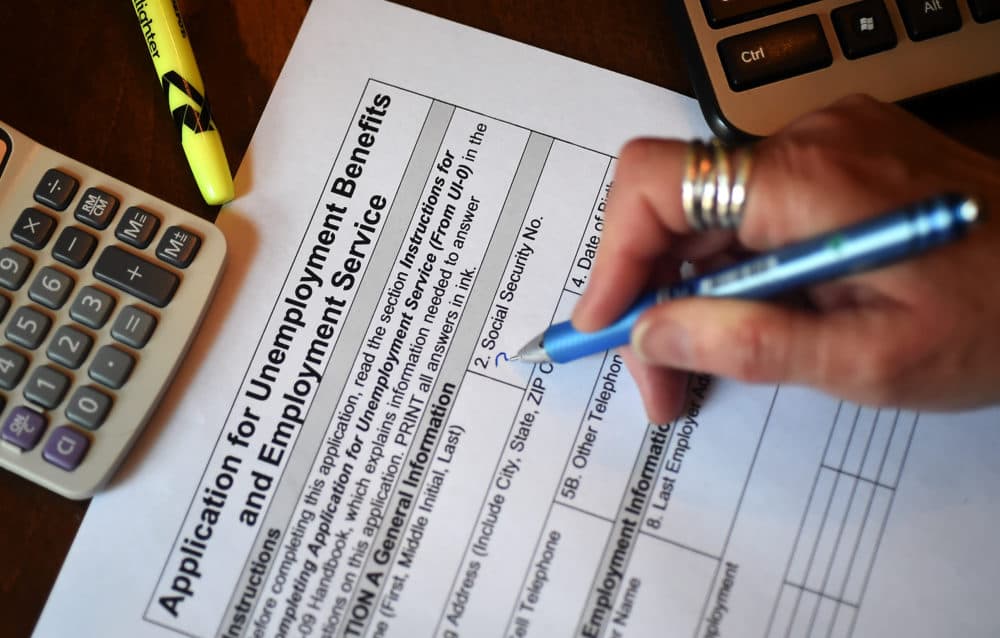Advertisement
Wisconsin Official On Why Residents Laid Off In March Still Haven't Received Unemployment Benefits

Four months into the COVID-19 pandemic, some Americans still haven't received any unemployment benefits.
Among them is DeiDra Blakley, a Milwaukee casino worker who was laid off in March. Here & Now spoke to her last week about her unsuccessful attempts to collect benefits from the Wisconsin Department of Workforce Development.
“Trying to get answers is the hardest part. The not knowing where your next paycheck is coming from is really stressful,” said Blakely, who estimated she had $13 in her bank account. “Bills are piling up, people are calling, the car is almost about to be repossessed, eviction. It’s nonstop.”
Caleb Frostman, secretary of the Wisconsin Department of Workforce Development, says the “unprecedented” number of claims filed during the pandemic is causing elongated processing times and an increased phone call volume.
In the past four months, Wisconsin residents have claimed 4.5 million weeks of unemployment — compared to 1.6 million weeks for all of 2019, he says.
“We've worked really hard to add more staff to process more claims more quickly and answer phone calls. And we're seeing solid progress,” he says. “But it's still a challenge with the mountain of claims that have come in since the middle of March.”
Recent data from the department shows 140,000 people have a hold on their claim, Frostman says. Of those claims, 100,000 people have a pending payment awaiting adjudication determination, while the other 40,000 have not filed a weekly claim.
To get through the claims, the department has hired more than 1,300 people, including permanent staff as well as contractors for adjudication and claims processing, he says. Before the pandemic, only 500 people worked in unemployment insurance in the state.
On top of a “historic volume of claims,” Frostman says Wisconsin is also facing other issues due to unemployment insurance programs being federally funded. A state’s allocated funding is based on local economic indicators like the unemployment rate.
Advertisement
When Wisconsin went from a 3% unemployment rate in March to 14% in April, the federal funding formula didn’t immediately adjust the amount of staff the state needs, he says. The department has been working to build up its staff — but not quickly enough.
“It's not fast enough for anyone, the folks that are waiting on their payments,” he says. “We won't be satisfied until every eligible claimant gets paid, every dollar they're owed, including back pay.”
Wisconsin has also passed a series of laws that “unnecessarily complicate the unemployment insurance process,” he says.
The state also uses a 50-year-old IT system that made it difficult to roll out federal aid programs. Wisconsin has been looking to modernize its technology for some time, he says, but this lesson learned from the Great Recession wasn’t acted upon before COVID-19 hit.
“We're hopeful that this horrible economic catastrophe and the impacts of these older systems can be put to good use going forward with some urgency around modernizing systems,” he says.
Jill Ryan and Cassady Rosenblum produced and edited this interview for broadcast with Tinku Ray. Allison Hagan adapted it for the web.
This segment aired on July 20, 2020.

